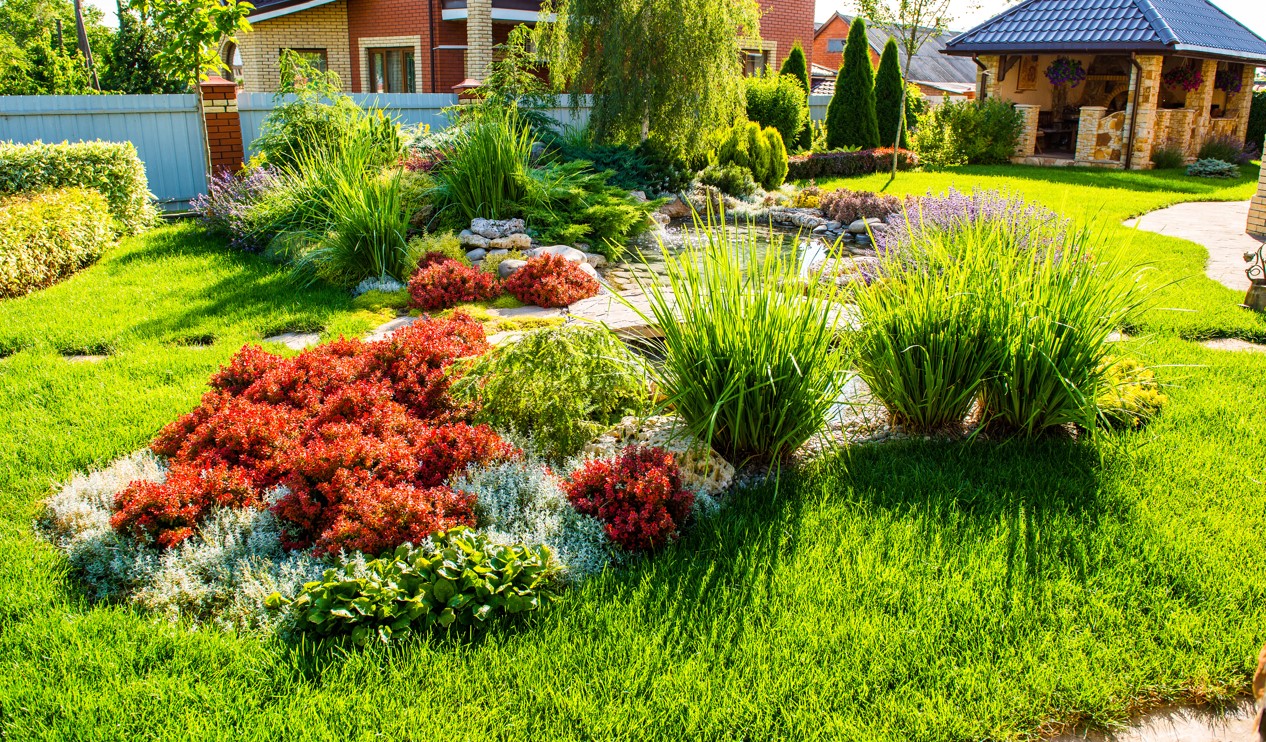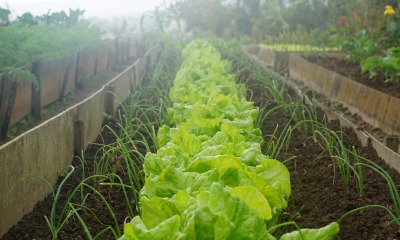Home Improvement
Landscape Irrigation Systems: The Basics

If you’re a homeowner, you know that keeping your lawn and landscaping looking nice can be a lot of work. One of the most important aspects of this is making sure your plants are properly watered. irrigation systems can be a big help in achieving this, but they can also be confusing to set up and maintain. In this blog post, we’ll go over the basics of landscape irrigation systems so you can make sure your lawn stays green and healthy all summer long.
Define irrigation and discuss the purpose of irrigation in landscaping
Irrigation is the process of applying water to plants and grass in landscaping. The purpose of irrigation is to create visual appeal, health, and vibrancy for your yard. With irrigation, you are able to have a beautiful oasis that thrives with healthy greenery. Additionally, irrigating can maintain efficient hydration and prevent endangered species in your area from drying out. Lastly, it prevents the issue of over- or under-watering areas in our yards which can inhibit growth and ruin landscape designs. Through these many benefits, we can see why irrigation is an essential step for successful landscaping.
Introduce the different types of irrigation systems available for landscaping
Irrigation is an important component of landscaping, as it ensures that landscape plants are able to receive adequate water and nutrients. There are a few different types of irrigation systems available that cater to different garden sizes and configurations. Sprinkler systems pump water through pipes connected to a network of sprinklers that evenly water lawns and flowers. Drip irrigation works by delivering small amounts of water to plants at regular intervals which helps prevent plant overwatering and runoff. Irrigation software can also be used; this type of system uses sensors built into the soil to monitor moisture content and report information back to an app or web dashboard, allowing users to control their irrigation setup remotely. Irrigation systems, both manual and automated, allow for convenient, customized levels of watering for landscapes of all kinds.
Discuss the factors to consider when choosing an irrigation system for your landscape
When it comes to selecting the right irrigation system for your landscape, there are a few factors to consider. Start by assessing the area you want to irrigate. Measure the size of the area and determine which type of system would be most suited depending on how large or small it is, as well as how far away it might be from a water source. Second, decide how often you need to water your plants and lawns. Consider soil conditions and foliage in order to set up an irrigation schedule that meets your needs best. Third, look into what type of layout will work best in your landscape. You also need to consider any obstructions that exist that could interfere with the effectiveness of your systems, such as trees or other structures, before making a decision. Finally, decide if you prefer a manual or automatic irrigation system; both have their pros and cons depending on the circumstances. By following this guidance, you can make an informed decision when choosing an irrigation system for your landscape.
Describe how to properly install and maintain an irrigation system
Installing and maintaining an irrigation system doesn’t have to be difficult. It’s important to research different brands of systems before making a purchase, and also take into account the best location for your specific needs. For example, if a system needs to cover a large area with varying water needs, multiple sprinkler heads may be necessary. Once the system is tested and installed properly, it’s important to check regularly that all of the parts are in working order – faulty parts can lead to inefficient water usage and waste. Finally, check the settings on the timing controller regularly to make sure you’re taking full advantage of efficient watering times considering sun intensity and temperature. Follow these steps and you’ll have a reliable irrigation system every season!
Offer tips on troubleshooting common problems with irrigation systems
Troubleshooting common problems with irrigation systems can be challenging, but it doesn’t have to be daunting. The first tip is to ensure all valves are in the appropriate positions and that each section of the sprinkler system works correctly. When there is a problem, it’s typically easy to identify because one section will not be working like the others. When the valves are put back into normal settings and the system still isn’t functioning properly, investigate further by shutting off each zone one at a time and looking for breaks or leaks in the water lines. If there is any damage, it may need to be repaired or replaced. Last but not least, make sure all parts of the irrigation system are compatible with one another, as different parts may require different designs in order to perform as they should. With these simple tips, troubleshooting irrigation systems becomes much more straightforward.
Share ideas on using irrigation systems to conserve water in your landscape
Smart irrigation systems are a great way to save water while keeping your landscape looking beautiful. These systems use precision technology that can be tailored to the specific needs of your landscaping, which helps conserve water in places that need it most. For watering grass, consider installing a system with low-flow irrigation heads, which will help prevent runoff and save up to 50% of your average yearly water usage! You can also set up sensors on your system so it only turns on when the soil is dry and only for the time needed to rehydrate the land. With some simple steps, you can ensure that you’re getting the most out of every drop of water you put into your yard!
An irrigation system is a great way to keep your landscape healthy and beautiful while conserving water. There are many different types of irrigation systems available, so it’s important to choose the right one for your needs. Once you have your irrigation system installed, be sure to properly maintain it to avoid any common problems. With a little care and attention, your irrigation system will provide years of trouble-free service. Thanks for reading! We hope this article was helpful in choosing the best irrigation system for your landscape.
-

 Tech11 years ago
Tech11 years agoCreating An e-Commerce Website
-

 Tech11 years ago
Tech11 years agoDesign Template Guidelines For Mobile Apps
-

 Business6 years ago
Business6 years agoWhat Is AdsSupply? A Comprehensive Review
-

 Business10 years ago
Business10 years agoThe Key Types Of Brochure Printing Services
-

 Tech8 years ago
Tech8 years agoWhen To Send Your Bulk Messages?
-

 Tech5 years ago
Tech5 years ago5 Link Building Strategies You Can Apply For Local SEO
-

 Law5 years ago
Law5 years agoHow Can A Divorce Lawyer Help You Get Through Divorce?
-

 Home Improvement6 years ago
Home Improvement6 years agoHоw tо Kеер Antѕ Out оf Yоur Kitсhеn



































